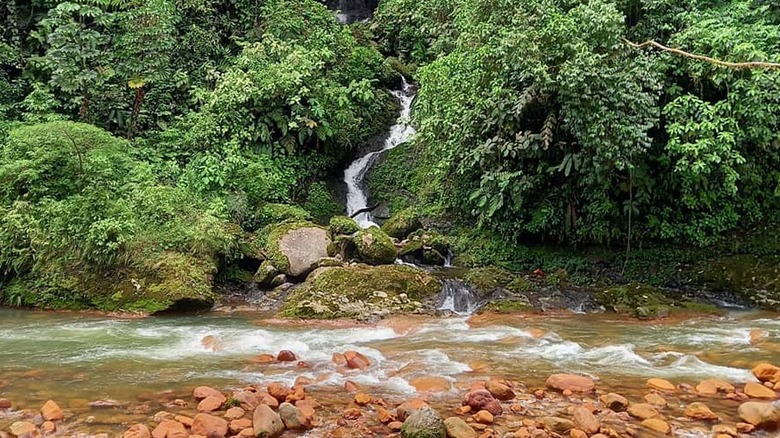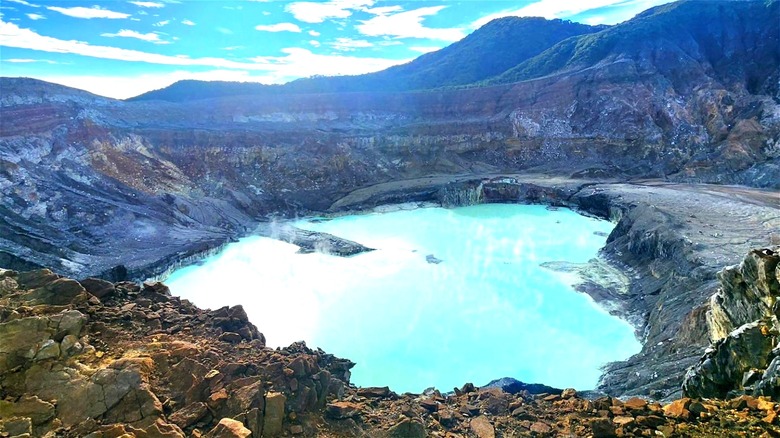The Nightmare-Fueling Reason Costa Rica's 'Cave Of Death' Won't Allow Visitors Inside
Costa Rica is a beloved tropical paradise that just about everyone loves. It's a country filled with amazing things to do — and the terrifying Cave of Death, or Cueva de la Muerte. Picturing an ominous cavity waiting for curious people to enter and devouring them forever is truly terrifying. There are many people who go out of their way to make the trip to the cave with the hopes of venturing inside, hoping to prove everyone wrong with their brave and stupid antics. Sadly, the cave of death isn't anything to toy around with — it's exceptionally hazardous. The many signs near and at the cave entrance warn of the imminent death, yet people still try their luck.
Researchers looked a bit further into what it is that makes the forbidden Cueva de la Muerte so deadly. What they found is an incredibly high reading of carbon dioxide. As you likely know already, carbon dioxide is what we breathe out. But high concentrations can reduce oxygen in the air, leading to headaches, rapid breathing and heart rate, and eventually vomiting, convulsion, coma, and suffocation.
What scientists have to say about the cave
Researchers from all over the world have been intrigued by the Cave of Death. Located in the Venecia de San Carlos area of the Alajuela Province, it lies on the bottom side of the Poas Volcano amid some amazing hot springs. The Recreo Verde Hotel & Spa, a lovely Costa Rican resort built around the hot springs, is a vacation destination with rave reviews. However, it harbors a dark secret — the Cueva de la Muerte lurks on the edge of the Poas Volcano within the resort. It's not advertised on the hotel's website, for good reason.
The cave is not actually much of a cave at 6.5 feet deep and 10 feet long. Explorers, like Guy van Rentergem, have arrived at the same conclusion regarding why the cave is so deadly. "This is a very small cave, but it's unusual in that there is a substantial seep of carbon dioxide gas coming from the far slot at the back of the cave," the Belgium-based cave explorer said on his YouTube channel.
Where the carbon dioxide comes from
Where does all of this carbon dioxide come from and why is it in the miniature cave? The pure chemical is heavy, so it sinks to the ground, which means an almost instantaneous death for any small animals that dare to venture inside. What is known is that the cave is composed of volcanic rock. The cave is in such close proximity with the Poas Volcano that is constantly fed carbon dioxide that is coming from deep within the earth. Specifically, the natural gas enters karstic cavities through a fissure in the back of the cave.
The Cueva de la Muerte is simply astonishing and completely deadly to humans who are very close to the surface of the ground. These types of caves are rare, with only a few recorded. As long as you don't belly-crawl into the cavity, you should be fine to observe it from the outside. The same cannot be said about small animals. If you decide to pack up the family and head to this amazing resort in Costa Rica, be sure to check out the "secret" cave, if only to take a photo with all of the warning signs to show your friends.

